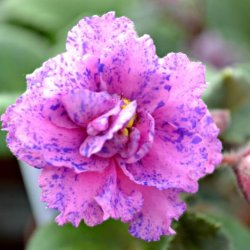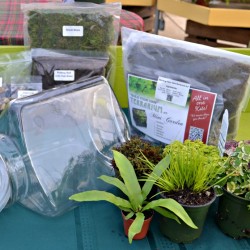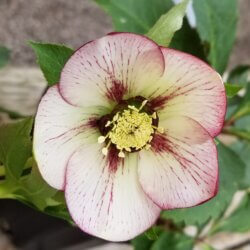Growing Orchids: Tips for Success
When To Grow Orchids
Orchids thrive in temperatures between 55°F and 80°F, making spring and fall great outdoor growing seasons in North Carolina. Indoors, orchids can be grown year-round, though they will generally do best when there are longer daylight hours.
How and Where To Plant an Orchid
- Flower beds vs. containers: Orchids thrive best in containers, where you can control essential growing conditions like drainage. Opt for the smallest container that still fits the root system, with fast-draining construction and a depth that keeps the base of the plant just above the rim.
- Sunlight: Orchids need bright, indirect light for optimal flowering—around 3-4 hours a day.
- Soil for orchids: Use a well-draining orchid mix with bark, sphagnum moss and perlite to mimic natural growing conditions. Avoid regular potting soil, as it retains too much moisture and can lead to root rot. You can further tailor the soil type to your orchid species (e.g., fine bark for smaller orchids and coarse bark for larger varieties).
CALL FOR PLANT AVAILABILITY IN NC
Orchid Care: How to Keep Them Thriving
Watering Your Orchids
- Water orchids twice a week during the day if the soil feels dry.
- Use room temperature water to avoid stressing the plant.
- Never let the pot sit in water. Instead, place the pot on a tray of gravel to promote air circulation, prevent root rot and create humidity.
- Mature orchids should rarely dry out completely between waterings. If needed, lightly mist the leaves (avoiding the petals) in the mornings.
Fertilizing Your Orchids
- Apply a water-soluble, balanced fertilizer (10% Nitrogen, 10% Phosphorus, 10% Potassium) at half strength once a month. Alternatively, you can also use a weaker solution every second or third watering.
- Avoid over-fertilizing, as it can damage the roots.
- Periodically flush the pot with at least one gallon of room-temperature water, allowing it to pass through the soil until it drains completely. This helps remove excess fertilizer buildup and keeps the soil healthy.
Do you have questions about caring for orchids? Visit Fairview Garden Center in Raleigh, NC or give us a call—we’re here to help!
How to Repot Your Orchids
Orchids should ideally be repotted after each bloom period, or at least every two years, to refresh the potting mix and support healthy growth.
Steps to Repotting Orchids
- Remove the orchid carefully from its container, gently loosening the roots.
- Trim any dead or damaged roots.
- Use the smallest container that accommodates the root system to encourage new growth.
- Refill with fresh, fast-draining orchid mix.
- Water lightly after repotting and allow the plant to adjust to its new environment.
When orchid repotting, do not divide the plants into small pieces, as larger root balls produce more new growth and better flowers.
What Are the Most Popular Varieties of Orchids?
Orchids are one of the largest plant families, with over 25,000 species worldwide. This includes:
- Phalaenopsis (Moth Orchid): Known for long-lasting blooms and ease of care, making it a favorite for beginners.
- Cattleya: Famous for its fragrant, colorful flowers that are often used in corsages.
Dendrobium: Available in a wide range of colors and sizes, it’s often used as a cut flower due to its strong stems.
CALL FOR PLANT AVAILABILITY IN NC
Fun Facts About Orchids: Origin and Other Uses
- Orchid extracts are used in perfumes and skincare products.
- Orchids have traditional medicinal applications in parts of Asia.
- Vanilla bean flavoring comes from the vanilla planifolia orchid that’s native to Mexico and Central America.
Terrarium Time Did you know that terrariums were discovered by accident out of necessity and sustainability? In 1827, a London physician named […]
Read More
As winter inches ever-closer, the perennial department turns its attention to the hero of the winter shade garden: the hellebore. Helleborus, also […]
Read More
How to Choose the Right Plant for the Right Spot We all love to be surrounded by the people and things that […]
Read More








